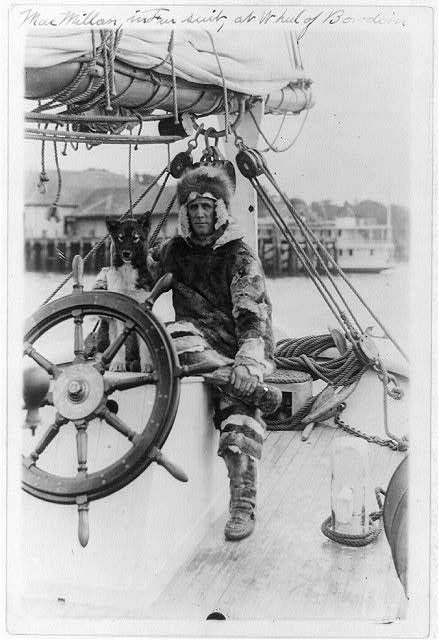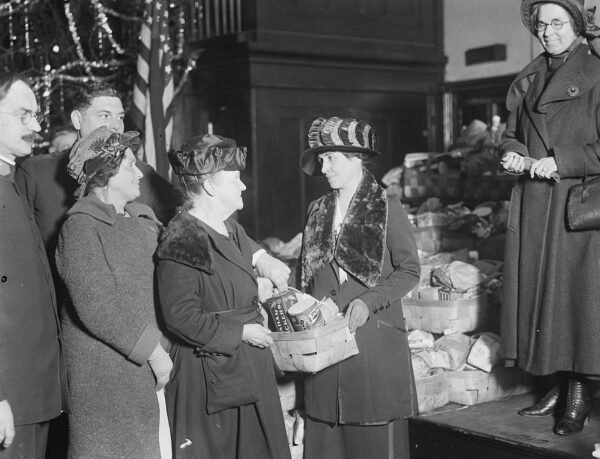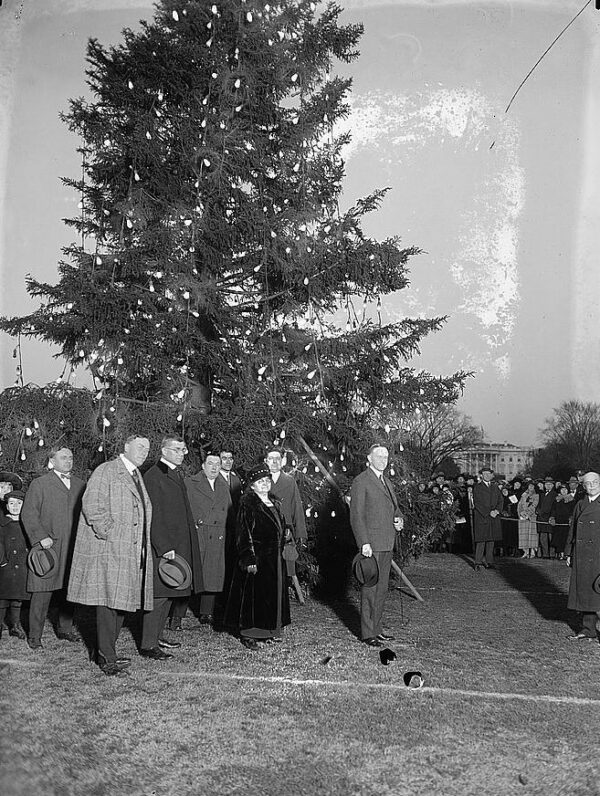Lessons from President Coolidge About What to Teach First
Like all new presidents and first ladies, the Coolidges experienced many firsts in the early months of his presidency. On September 5, 1923, the president made his first address as president when he spoke to members of the National Association of Post Office Clerks from the south steps of the White House.

On December 6, he became the first president to deliver a speech that was broadcast on radio when he gave an address, now called the State of the Union, to a joint session of Congress.

In November, First Lady Grace Coolidge gave the District of Columbia Public Schools permission to place a Christmas tree near the White House. This tree would become the first National Christmas Tree. On December 18, Calvin Jr. and John Coolidge came home to the White House from their boarding school in Pennsylvania to celebrate Christmas with their parents. The first lady finished her Christmas shopping that day. The White House was decorated with holly, mistletoe, and red ribbons.
On December 22, President Coolidge sent a Christmas greeting to Captain Donald B. MacMillan and six other American Arctic explorers who were perhaps the people who were closest to the North Pole that day. Ham radio operators relayed the message.

MacMillan during an earlier exploration the year before
Mrs. Coolidge spent part of Christmas Eve passing out food baskets at the headquarters of the Salvation Army.

Mrs. Coolidge gives out food baskets at the Salvation Army, December 24, 1923
She also sent 50 bouquets of roses to local female shop clerks who had helped her with her Christmas shopping. The president met with callers at the White House and sent a message to disabled American veterans expressing America’s feelings for those who sacrificed to defend American ideals. At 5:00 p.m. on Christmas Eve, he pushed a button to light that first National Christmas Tree. The tree was a 48-foot balsam fir from his home state of Vermont. The Electric League of Washington donated the 2,500 multicolored electric light bulbs. The tree stood on the Ellipse, a large park between the White House and the Washington Monument.

President Coolidge lights the national Christmas tree, December 24, 1923.
More than 6,000 people watched the tree lighting and then moved to the south grounds of the White House to sing Christmas carols. At 7:00 p.m., the Epiphany Church choir and the U.S. Marine Band performed for an hour.
At 9:00 p.m., the First Congregational Church choir sang outside the White House. Mrs. Coolidge and the church’s pastor chose the carols.

First Congregational Church Choir, December 24, 1923
The local Evening Star newspaper published the words so that attendees could sing along.

Crowd at the carol singing, December 24, 1923
On Christmas Day, the president took a half-hour walk with Secret Service agents. The family opened presents and attended Christmas services at the First Congregational Church with Chief Justice William Howard Taft. After enjoying a traditional New England roast turkey for dinner, the four Coolidges visited disabled veterans at Walter Reed Hospital for almost three hours. The family watched a new movie about Abraham Lincoln along with the veterans.
President Calvin Coolidge followed the faith of his parents and grandparents. In his Autobiography, he said that they cherished the Bible’s teachings and worked to live their lives based on those teachings. Just hours after Coolidge learned that President Harding had died, he sent a telegram to the minister of the First Congregational Church, which they began attending after he became vice president. President and Mrs. Coolidge worshipped at this church on their first Sunday as president and first lady.

The Coolidges enter First Congregational Church on Sunday, August 5, 1923.
About six weeks before becoming president, Coolidge had said:
We do not need more law, we need more religion. We do not need more of the things that are seen, we need more of the things that are unseen.
On June 25, 1924, Coolidge delivered a message to a group of Boy Scouts who were about to sail to Copenhagen, Denmark, for an international Boy Scout gathering. The message was transmitted by telephone. He told them:
It is hard to see how a great man can be an atheist. Without the sustaining influence of faith in a divine power we could have little faith in ourselves. We need to feel that behind us is intelligence and love. Doubters do not achieve; skeptics do not contribute; cynics do not create. Faith is the great motive power, and no man realizes his full possibilities unless he has the deep conviction that life is eternally important, and that his work, well done, is a part of an unending plan.
In his 1925 State of the Union address, he said:
A spring will cease to flow if its source be dried up; a tree will wither if its roots be destroyed. In its main features the Declaration of Independence is a great spiritual document. It is a document not of material but of spiritual conceptions. Equality, liberty, popular sovereignty, the rights of men—these are not elements which we can see and touch. They are ideals. They have their source and roots in these religious convictions. They belong to the unseen world. Unless the faith of the American people in these religious convictions is to endure, the principles of the Declaration will perish. We can not continue to enjoy the result if we neglect and abandon the cause.
We and our children are surrounded by what our eyes see. They are depending on us to teach them the unsurpassed value of what is unseen. They are depending on us to make sure that is the lesson we make first of all.
Therefore we do not lose heart,
but though our outer man is decaying,
yet our inner man is being renewed day by day.
For momentary, light affliction is producing for us
an eternal weight of glory far beyond all comparison,
while we look not at the things which are seen,
but at the things which are not seen;
for the things which are seen are temporal,
but the things which are not seen are eternal.
2 Corinthians 4:16-18
To read Charlene’s entire series on Calvin Coolidge, click here.

